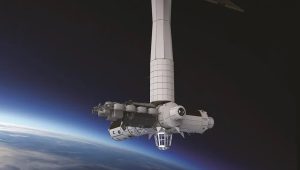Executives representing two companies involved in the development of commercial space stations have urged NASA and Congress to take fiscal and policy measures to prevent a potential gap in human presence in low Earth orbit (LEO), expressing concerns that such a gap could result in a loss of leadership to China.
During a hearing held by the House Science Committee's space subcommittee on February 14th, representatives from Axiom Space and Voyager Space emphasized the need for increased funding and policy support to facilitate a smooth transition from the International Space Station (ISS) to commercial stations.
Dylan Taylor, CEO of Voyager Space, stated, “A funding increase authorized by Congress will bolster investor confidence and accelerate early investment. Lack of investment in 2024 and 2025 would jeopardize schedules for all providers and increase the risk of a gap in U.S. human presence in low Earth orbit.”
Mary Lynne Dittmar, Chief Government and External Relations Officer at Axiom Space, echoed similar sentiments and proposed nine recommendations, including ending the ISS program by 2030 and allocating sufficient funding to the CLD program. Dittmar also emphasized, “It's absolutely critical that we maintain consistency with that date because investors are underwriting based upon a timeline. If the timeline changes, the underwriting changes and the investment thesis changes.”
These calls for action come amidst recent discussions within NASA regarding the potential extension of the ISS program as a precaution against delays in commercial space station development. However, concerns persist regarding the implications of any gap between the ISS and commercial stations.
Ken Bowersox, NASA Associate Administrator for Space Operations, stated NASA's commitment to ensuring the availability of at least one commercial station before the planned retirement of the ISS in 2030. While he did not directly address specific recommendations from station developers, Bowersox emphasized NASA's dedication to avoiding any gap in LEO presence.
The executives' concerns underscore the importance of collaborative efforts between government agencies and private industry to sustain American leadership in space exploration and utilization.
Photo: Axiom Space
